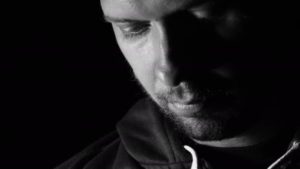CampusScenes
Northwestern University
Grapples With Rash
Of Suicides
MSN News Special Report
Alarmed by the suicides of four students this year, including a sophomore found dead in his dormitory in late November, Northwestern University is boosting staff at the campus’ main counseling center. Two new employees will join its mental health center, Counseling and Psychological Services, to perform suicide screenings and clinical support services, Vice President for Student Affairs Patricia Telles-Irvin announced in a message to students last week.
“I share your concerns about the need for the university to respond to the fullest extent possible to issues surrounding students who may be struggling, and we have worked diligently and deliberately to do so,” Telles-Irvin wrote Dec. 5.
Daniel Jessell, a sophomore, was found dead the night of Nov. 28 at his dorm on the north side of the Evanston campus, according to university and Cook County medical examiner’s office officials. The coroner ruled Jessell died in a suicide. Reached through email, his mother declined comment. Jessell, originally from Delray Beach, Fla., is at least the ninth Northwestern student to die of a suicide since May 2013, according to a series of news reports, including the Daily Northwestern’s. Four of these, including Jessell, have been in 2018 alone. Junior Kenzie Krogh died in February, senior Ananya Agrawal died in May and senior Angelica Wilson died in June.
 The medical examiner concluded suicide was the manner of death for Krogh, Agrawal and Wilson, though the causes differed. Family members of the students could not be reached for comment. Courtney Chatterton, a senior who was friends with Agrawal, described him as a “huge goofball” and said his death came out of the blue. “People have died of suicide every year I’ve been at Northwestern,” Chatterton said. “You become completely desensitized. Then it happens to someone you know.”
The medical examiner concluded suicide was the manner of death for Krogh, Agrawal and Wilson, though the causes differed. Family members of the students could not be reached for comment. Courtney Chatterton, a senior who was friends with Agrawal, described him as a “huge goofball” and said his death came out of the blue. “People have died of suicide every year I’ve been at Northwestern,” Chatterton said. “You become completely desensitized. Then it happens to someone you know.”
Northwestern’s experience is not uncommon among universities and is not happening in a vacuum, experts say, with students increasingly arriving on campus with mental health issues. Multiple schools nationally have experienced a series of deaths among talented students whose lives seemed so full of promise. National studies reveal an increasing demand for mental health services and growing proportions of students reporting suicidal thoughts, even though the actual rate of suicide has not grown much, experts say.
“What’s increased more dramatically is more students both coming to campus with mental health issues and developing mental health issues while they’re in college,” said Nance Roy, chief clinical officer at Jed Foundation, a New York-based nonprofit for suicide prevention in young adults. “Certainly there’s a tremendous increase in the number of students who are seeking help, which is good news. The downside to that is it’s very hard to keep up with demand.”
“I think people are just opening their eyes to it more and thinking about why it’s happening,” said Christine Lee, 20, a junior. “I know not everyone struggles with mental health, but I can’t help but wonder if the environment here contributes to that at all. There’s a lot of pressure here, definitely, to be the best.”
Suicide is the second leading cause of death for people aged 10 to 34, according to 2016 data from the Centers for Disease Control and Prevention. It is the third most common cause of death for Illinoisans ages 1 to 17, 18 to 24 and 25 to 44, according to recent data from the Illinois Department of Public Health. In 2017, 162 young adults in Illinois aged 18 to 24 took their own lives.
Around the country, campuses have been confronted with rashes of suicides. Fourteen students at University of Pennsylvania died of suicide between February 2013 and August 2017, according to The Daily Pennsylvanian. Six students at Cornell University took their own lives between October 2009 and March 2010. Four Massachusetts Institute of Technology students took their own lives in 2015, contributing to a larger trend of the Cambridge-based institution recording a significantly higher rate of student suicides than the national average.





